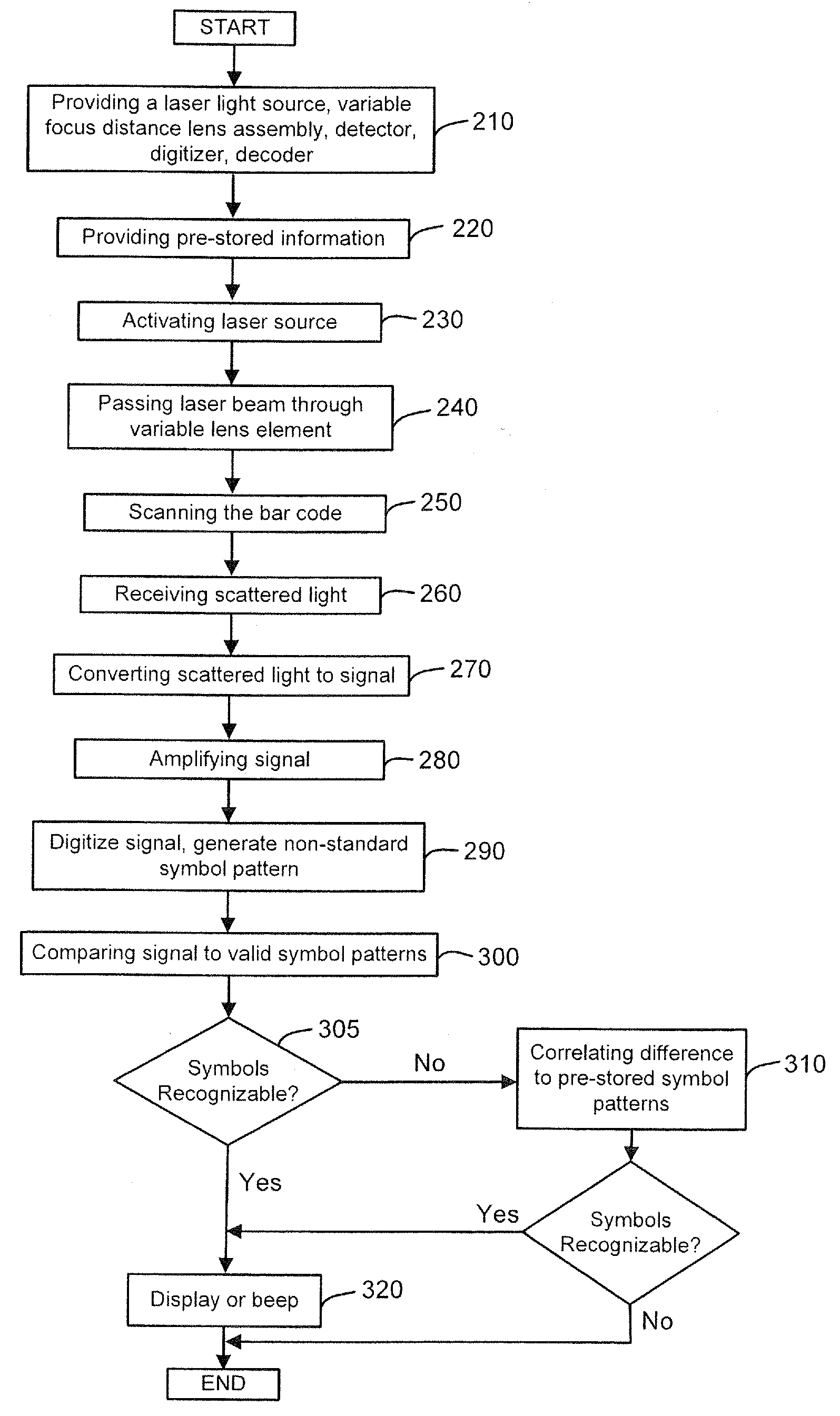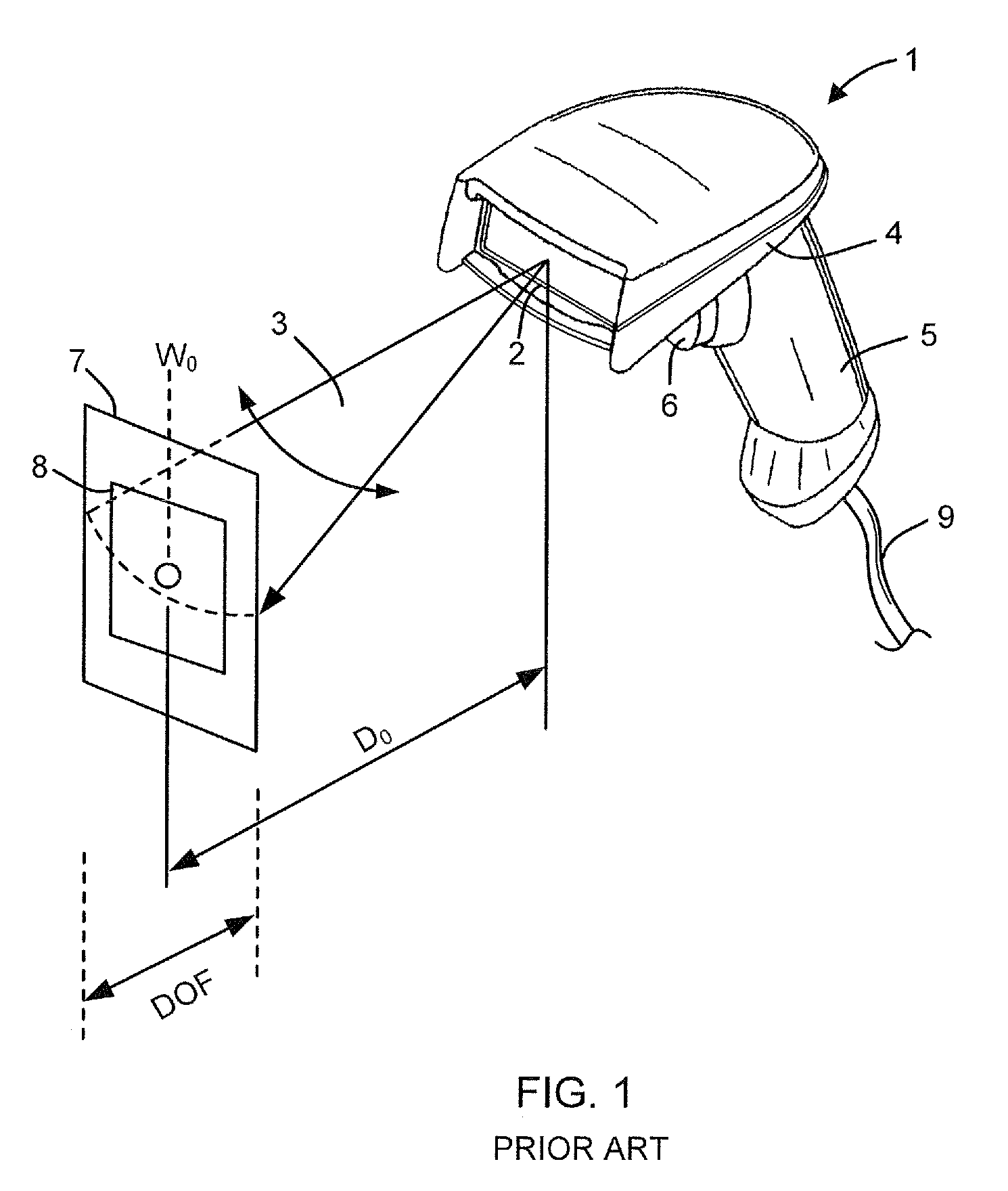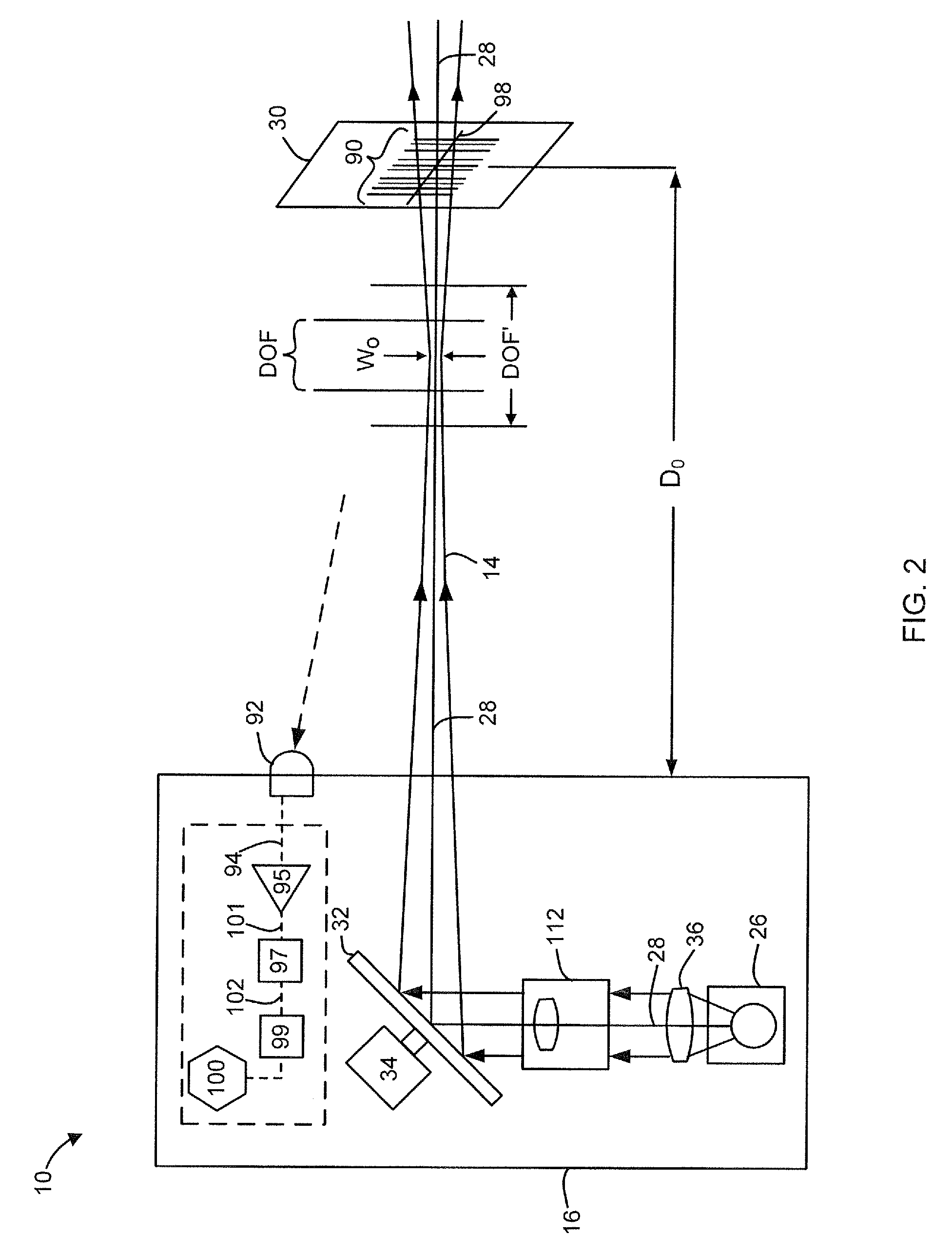Laser scanner with improved decoding
a laser scanner and laser scanner technology, applied in the field of optical scanning systems, can solve the problems of adding cost, complicated improvements, and limited working range of conventional optical scanning systems, and achieve the effects of extending the working range, enhancing the depth of field, and decoding symbol characters faster
- Summary
- Abstract
- Description
- Claims
- Application Information
AI Technical Summary
Benefits of technology
Problems solved by technology
Method used
Image
Examples
Embodiment Construction
[0018]Referring to FIG. 1, shown is a typical prior art laser bar code reader 1. The reader 1 includes a housing 4 which, in one example, may have a pistol grip handle 5 and a trigger 6. The reader 1 further includes a fixed-lens assembly 2 for focusing a laser beam 3. Pressing the trigger 6 activates the laser beam 3 and allows the lens assembly 2 to focus the beam on a target 7 having optical indicia 8, such as a bar code symbol. The reader 1 may further include a data cable 9 to transfer data from the scanning apparatus to a host computer (not shown).
[0019]The fixed-lens reader 1 operates with the beam 3 focused at a fixed point D0 from the housing. The depth of field (DOF) of the fixed-lens assembly 2 is the linear range about the focused point in which the reader 1 is able to decode the symbol 8. As used herein, depth of field is defined as the distance between the maximum and minimum plane in which a code reader is capable of reading symbols of a specified X dimension (nominal...
PUM
 Login to View More
Login to View More Abstract
Description
Claims
Application Information
 Login to View More
Login to View More - R&D
- Intellectual Property
- Life Sciences
- Materials
- Tech Scout
- Unparalleled Data Quality
- Higher Quality Content
- 60% Fewer Hallucinations
Browse by: Latest US Patents, China's latest patents, Technical Efficacy Thesaurus, Application Domain, Technology Topic, Popular Technical Reports.
© 2025 PatSnap. All rights reserved.Legal|Privacy policy|Modern Slavery Act Transparency Statement|Sitemap|About US| Contact US: help@patsnap.com



